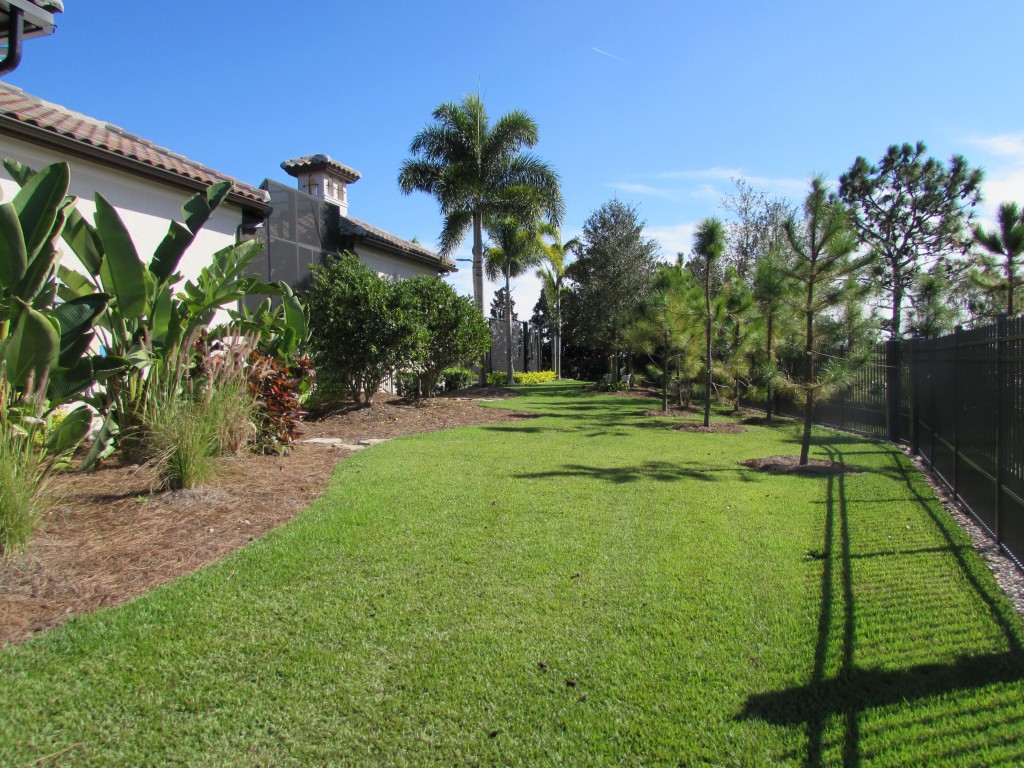One of the most critical elements to maintaining your landscape involves a properly functioning irrigation system and a fertilization program that meets the nutrient requirements of your landscape plants.
Fertilization and Irrigation needs for Florida lawns and landscapes please see link
How lawns and landscapes are fertilized and irrigated can have a direct impact on the natural environment.
The basic maintenance of Empire Zoysia lawns will be depended upon soil fertility, rainfall, full Sun and match precipitation irrigation.
Most people do not fertilize their own lawns. They either depend upon mother nature or a professional fertilization company to do the work. Well-maintained lawns are fertilized with the right amount and the right kind of fertilizer for that particular grass species. The fertilization schedule is based on the growing season. In order for the fertilization program to work, the right amount of moisture must be available in the turf root zone.
Under feeding or overfeeding leads to the buildup of thatch and higher stress levels on the turf species.
Water schedule stabilize growing seasons.
Healthy lawns smother weeds. Let’s use of herbicides.
Drip/micro irrigation maintenance aims at preserving emission uniformity and efficiency. This can be achieved by operating the system according to design pressures and flow rates while making regular field inspections, performing necessary preventative measures in a timely manner, and promptly remedying malfunctions.
Evaluate water quality! A laboratory analysis of the source (S) of water is critical.
Adjusting the filtration system is vital to the performance of the irrigation system
Bicarbonate is common in surface and groundwater. Edit pH of 7.5 or higher and bicarbonate concentrations of 2 mEq per liter, the bicarbonate is as susceptible to precipitation as calcium carbonate (lime).
The concentration and composition of dissolved salts in and irrigation water supply can affects soil properties, ultimately affecting growth habit and health of plants.
Development of Irrigation and Fertilization Programs – please see link
MODEL ORDINANCE FOR FLORIDA-FRIENDLY FERTILIZER USE ON URBAN LANDSCAPES – please see link
Nutrient and irrigation management to reduce nonpoint source pollution of surface and ground waters in Florida urban landscapes
Frequently Asked Questions about Landscape Irrigation – please see link
Irrigating with Reclaimed Water


